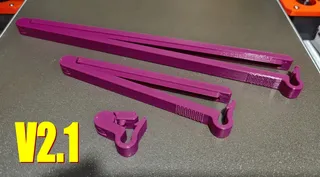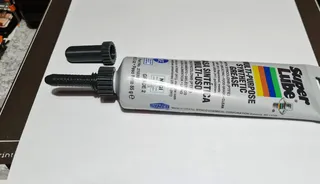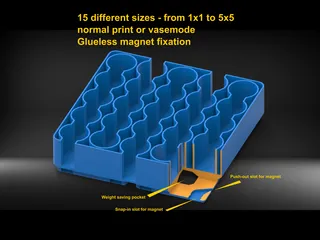Wire Stripper / Cable-peeler / Kabel-Abisolierer
Description
PDFObject description:
This wire stripper is as the title says, a tool which cuts in the outer insulation of a cable that you can easily peel it off.
I made the experience that a lot of professional tools work with a spring mechanism and cut often too deep, even into the thin isolation of the wires. Which should be strictly avoided.
This great tool allows a very precise adjustment of the cutting depth and allows your full control of it.
If you have a suggestion for a specific cable diameter, please leave me a note. I'll implement it in Disc_3 or a new one. Any other suggestion for an improvement is also welcome.
Update from 2024-06-06:
- Disc_3 changed. Holes for cable dia. 3,5 and 4,0 mm removed. Holes for data cable dia. 1,38 and 1,78mm added based on request from Zauberelch.
Update from 2023-11-25:
- Disc_3 changed. Holes for cable dia. 4,5 to 6,0 mm removed. Slots added for cable types 14-2, 14-3, 12-2 and 12-3 according to specifications provided by MiscPrinter.
Update from 2023-01-10:
- File Handle_long_M5 replaced. The old one was geometrically identical to the M4 version. Thanks to Erik for this hint.
Update from 2022-12-15:
- With reference to the suggestions from ProTeX3D: Alternative parts for M4 screws and nuts, and a 30mm longer handle added. Using this files you have to replace the M5 nuts and screws by M4 versions. The screw lengths remain the same. STL-files removed.
Update from 2022-10-30:
- Disc_3 added
Update from 2022-07-13:
- Since there are now two feedbacks about a bit too much clearance of the slider, there is now the version "Slider_tight fit.xxx" with reduced clearance available in the folder "alternative files".
Comments:
- It is designed for the use of standard 9mm cutting blades. The detailed dimensions are available in the attached photos.
- The clamp and the slider are designed to have the best compromise between backlash free and still good slidable. In my case I had only moved the sliders after assembly several times forth and back to smoothen the surfaces. If this is not enough with your print you can post-process it carefully with sand paper. In worst case I can provide a step-file of both parts if there is really a demand.
- Due to the necessary backlash between the cable and the bore of the tool I recommend to adjust the cutting depth short before the full wall thickness. Even a not fully through cutted insulation can easily pulled off.
- Disc_1 offers 10 holes for cable-dia. 3,5mm to 8,0mm in 0,5mm steps
- Disc_2 offers 6 holes for cable-dia. 8,5 / 9,0 / 10,0 / 11,0 / 12,0 / 13,0mm
- Disc_3 offers 10 holes for cable-dia. 1,5mm to 4,0mm in 0,5mm steps and slots for cable types 14-2, 14-3, 12-2 and 12-3. These four slots are designed with 0.1mm clearance according to MiscPrinter's specifications and have not yet been tested. I look forward to any feedback on whether these slots work or not. If necessary, I will correct the dimensions.
- The knurled_knob_M5_Nut is designed that a standard M5 nut is to be integrated in the part during printing. The 3mf-file already contains a pause command.
- as an alternativ you can print the knurled_knob_M5_Nut_open. With this version no pause command is needed and you can insert the nut later.
- The M5x20 main screw is long enough that you can clamp both discs together when you don't need the tool at the moment.
Additional parts needed:
- 1x 9mm cutter knife
- 2x Hexagon Nut M5
- 1x Hexagon screw M5x20mm
- 1x Hexagon screw M5x12mm
- 1x Metal plate 14x9x2mm (stainless steel, aluminum, whatever you have available)
- as an alternative you can print the plate attached in the folder “alternative files” with 100% infill
Print settings:
Material: PETG or ABS/ASA
Layer height: 0,2mm
Infill: 25%
Perimeters: 2
Brim: no
Support: no, only the handle needs a bit support under the nut hole. The 3mf-file already includes the data for a paint-on support.
Additional information:
This is a remix of enif's Multicore Cable Peeler available here: https://www.thingiverse.com/thing:3224787
I discovered it more than one year ago, downloaded the STL's, reengineered it completely and made some modifications for a safer handling and a use without any need of a tool.
I also added a metal-plate that distributes the pressure of the screw over a larger area and avoids material impressions on the handle.
Tags
Model origin
The author remixed this model.





